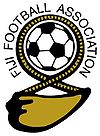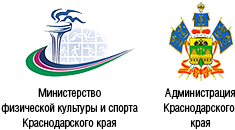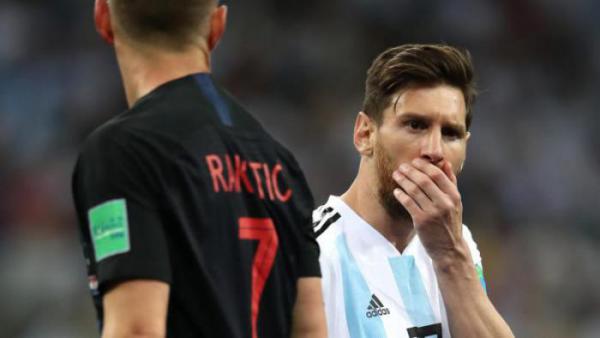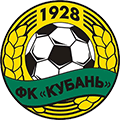Сборная Фиджи по футболу. Сборная по футболу фиджи
Сборная Фиджи по футболу — Википедия
Материал из Википедии — свободной энциклопедии
Сбо́рная Фи́джи по футбо́лу — представляет Фиджи на международных соревнованиях по футболу. Команда выступает под эгидой Футбольной федерации Фиджи.В рейтинге ФИФА на 24 ноября 2016 года[1] занимает 177-е место.
Кубок наций ОФК
- 1973 — 5-е место
- 1980 — 4-е место
- 1996 — не квалифицировалась
- 2000 — не была допущена к соревнованиям
- 2002 — групповой этап
- 2004 — 4-е место
- 2008 — 3-е место
- 2012 — групповой этап
- 2016 — групповой этап
Видео по теме
Чемпионат мира
- С 1930 по 1978 — не прошла
- 1982 — не квалифицировалась
- 1986 — не прошла
- С 1990 по 2018 — не квалифицировалась
- 1963 — второе место
- 1966 — не участвовала
- 1969 — четвёртое место
- 1971 — первый раунд
- 1975 — четвёртое место
- 1979 — второе место
- 1983 — второе место
- 1987 — не участвовала
- 1991 — первое место
- 1995 — третье место
- 2003 — первое место
- 2007 — второе место
- 2011 — четвёртое место
- 2015 — четвёртое место
Состав
| 1 | Симионе Таманисау |
| 20 | Шенил Наиду |
| 22 | Беньямино Матейнакара |
| 2 | Авинеш Варан Сувами |
| 3 | Ремуеру Текиате |
| 4 | Джейл Дрелоа |
| 7 | Пита Болатога |
| 14 | Колинио Сивоки |
| 19 | Амани Мако |
| 21 | Элвин Сингх |
| 23 | Самуэла Каутога |
| 6 | Никель Чанд |
| 8 | Сетареки Хагес |
| 12 | Тевита Варанаивалу |
| 13 | Илисони Туинаваивуву |
| 16 | Малакаи Тива |
| 17 | Таионе Керевануа |
| 18 | Лайсениа Раура |
| 5 | Русиате Матаререга |
| 9 | Рой Кришна (капитан) |
| 10 | Иосефо Вериву |
| 11 | Илимотама Хесе |
| 15 | Самуэла Небения |
Примечания
Ссылки
wikipedia.green
Сборная Фиджи по футболу - WikiVisually
1. Конфедерация футбола Океании – The Oceania Football Confederation is one of the six continental confederations of international association football, consisting of New Zealand, Fiji, Tonga, and other Pacific Island countries. It promotes the game in Oceania and allows the member nations to qualify for the FIFA World Cup, OFC is predominantly made up of island nations where association football is not the most popular sport. Consequently, the OFC has little influence in the football world. In 2006, the OFCs largest and most successful nation, Australia, left to join the Asian Football Confederation, david Chung is the current President of OFC. Rajesh Patel is the Senior Vice President, Lee Harmon is the Vice-President while Tai Nicholas is the General Secretary, OFC is made up of 11 full member associations and 3 associate members. Associate member of the OFC, but non-FIFA member.2, unincorporated territories of the United States.3. Free associated state with New Zealand.4, Australia Chinese Taipei Though Israel played in some OFC competitions in the 1970s to 1980s they were not a member of the OFC. Other sovereign states and dependencies in the Pacific Ocean that are not members of the OFC are, Chinese Taipei were an OFC member from 1975 to 1989. In 1996 FIFA confirmed the OFC as a confederation and granted it a seat on the FIFA executive. In 1998 the OFC unveiled a new logo and an official magazine, on 24 May 2004, New Caledonia became the 11th member of the OFC. On 1 January 2006, Australia left the OFC again and joined the Asian Football Confederation, in 2008 an associate member, the Northern Mariana Islands Football Association, also left the OFC and in 2009 joined the AFC as a quasi-member. In late 2009 the Palau Soccer Association also applied for the status with the AFC. Since 1996, OFC members also play for the OFC Nations Cup, which was held every second year, the OFC also organises the Oceania Club Championship, a competition that has received surprisingly high levels of media support within New Zealand in its debut season. It serves primarily to determine the Oceania representative at the FIFA Club World Cup, in 2007, the OFC replaced the current club competition with the OFC Champions League which began in 2007. From 2007, the winner has no longer gained direct entry to the FIFA Club World Cup – and it is not clear whether this is permanent, or even if it could change if the Oceania entrant were to outperform entrants from other Confederations. Of the confederations current teams, only New Zealand has ever competed in the FIFA World Cup, founding member Australia also competed in the World Cup finals, in 1974 and 2006. At the conclusion of Germany 2006, Australias exit from the OFC was finalised, the other minor exception to this has been the participation of the Solomon Islands in the 2006,2007 and 2008 FIFA Beach Soccer World Cup. The winner of the OFC Cup also receives a berth in the FIFA Confederations Cup, New Zealand and Tahiti are the only current members of the OFC to have participated in this event
2. Рейтинг сборных ФИФА – The rankings were introduced in December 1992, and eight teams have held the top position, of which Brazil have spent longest ranked first. A points system is used, with points being awarded based on the results of all FIFA-recognised full international matches, the ranking system was most recently revamped after the 2006 World Cup, with the first edition of the new series of rankings issued on 12 July 2006. The most significant change is that the rankings are now based on results over the four years instead of the previous eight years. Alternative systems have been devised, such as the World Football Elo Ratings, based on the Elo rating system used in chess and Go, ranking teams. In December 1992, FIFA first published a listing in order of its member associations to provide a basis for comparison of the relative strengths of these teams. From the following August, this list was more frequently updated, significant changes were implemented in January 1999 and again in July 2006, as a reaction to criticisms of the system. Membership of FIFA has expanded from 167 to 209 since the rankings began, the ranking formula used from August 1993 until December 1998 was very simplistic and quickly became noticed for its lack of supporting factors. When the rankings were introduced, a team received one point for a draw or three for a victory in FIFA-recognised matches – much the same as a traditional league scoring system. This was a simplistic approach, however, and FIFA quickly realised that there were many factors affecting international matches. In order to meet the objective of fairly and accurately comparing the strengths of various national sides. In January 1999, FIFA introduced a system of ranking calculation. For the ranking all matches, their scores and importance were all recorded, only matches for the senior mens national team were included. Separate ranking systems were used for other national sides such as womens and junior teams. The womens rankings were, and still are, based on a procedure which is a version of the Football Elo Ratings. FIFA announced that the system would be updated following the 2006 World Cup. The evaluation period was cut from eight to four years, goals scored and home or away advantage are no longer taken into account, and other aspects of the calculations, including the importance attributed to different types of match, have been revised. The first set of revised rankings and the methodology were announced on 12 July 2006. This change is rooted at least in part in widespread criticism of the ranking system
3. Сборная Новой Зеландии по футболу – The New Zealand national football team represents New Zealand in international association football. The team is controlled by the body for football in New Zealand New Zealand Football. The teams official nickname is the All Whites, being one of national team nicknames related to the All Blacks. New Zealand is a five-time OFC champion, the team represented New Zealand at the FIFA World Cup tournaments in 1982 and 2010, and the FIFA Confederations Cup tournaments in 1999,2003 and 2009. New Zealands first international match was played in Dunedin at the old Caledonian Ground on 23 July 1904 against a team representing New South Wales. New Zealand lost by the only goal, but drew with the same team 3–3 in a game at Athletic Park. Of these three matches they won one, lost one, and drew one, the results were two 3–1 wins to New Zealand and a 1–1 draw in Wellington. Since the 1990s, United States college soccer has played a significant role in the development of New Zealand players. This influence began when former Scotland international Bobby Clark returned to the U. S. after his 1994–96 stint as New Zealand head coach to take the coaching job at Stanford University. Clark began recruiting in New Zealand, and former New Zealand national players Ryan Nelsen, the trend that Clark started has continued to the present, more than two dozen New Zealanders are now playing for NCAA Division I mens programs in the U. S. S. However, Lathams speculation did not prove true, as only one MLS player made the New Zealand squad for the World Cup, New Zealand formerly competed against Australia for top honours in the OFC. However, after Australia left to join the AFC in 2006, New Zealand qualified for the 2010 FIFA World Cup though exited the competition after the first round despite being the only team not to lose a game during the tournament. The tournament also featured one of New Zealands most notable results, New Zealand drew their other two pool games with Slovakia and Paraguay and inevitably finished above Italy, who placed last, in the group. New Zealand drew all three games and finished third in their group, in August 2014, Anthony Hudson was appointed manager of the All Whites. Hudsons first game in charge of the team was a 3–1 defeat away to Uzbekistan in September 2014. The All Whites record since that time is 8 wins,5 draws and 4 losses and this includes defeating Oman, who were ranked 67 places higher at 92nd place in the FIFA World Rankings, in a 1–0 victory. The supporters of the New Zealand national team are known as the White Noise, New Zealands long time rivals are Trans-Tasman neighbors Australia. The two teams dates back to 1922, where they first met in both their international debuts
4. Сува – Suva is the capital and second largest municipality and largest municipality with city status in Fiji. It is located on the southeast coast of the island of Viti Levu, in the Rewa Province, Suva is Fijis political and administrative capital. It is the largest and most cosmopolitan city in the southern Pacific Ocean and has become an important regional centre, students from the Pacific region and a growing expatriate community make up a significant portion of the citys population. According to the Authority of Local Government Act, Suva is governed, in 1877, it was decided to make Suva the capital of Fiji, as the geography of former main European settlement at Levuka on the island of Ovalau, Lomaiviti province proved too restrictive. The administration of the colony was moved from Levuka to Suva in 1882, at the 2007 census, the city of Suva had a population of 85,691. Including independent suburbs, the population of the Greater Suva urban area was 172,399 at the 2007 census. Suva, along with the towns of Lami, Nasinu. This urban complex is also as the Suva–Nausori corridor. The original intention was to develop a cotton farming industry, but the land, the transfer was made official in 1882. Colonel F. E. Pratt of the Royal Engineers was appointed Surveyor-General in 1875 and designed the new capital, assisted by W. Stephens, following the promulgation of the Municipal Constitution Ordinance of 1909, Suva acquired municipal status in 1910. The town initially comprised one square mile, these boundaries remained intact until 1952 when the Muanikau and Samabula wards were annexed, in October that year, Suva was proclaimed a city – Fijis first. Tamavua was subsequently annexed, the most recent extension of the city boundaries has been to incorporate the Cunningham area to the north of the city. Urban sprawl has resulted in a number of suburbs that remain outside of the city limits, together with the city itself, the city hosted the 2003 South Pacific Games, being the third time in the events 40-year history that they had been held in Suva. Suva is the capital of Fiji and is a city built on a peninsula reaching out into the sea. It has a mix of buildings and traditional colonial architecture. The city is perched on a peninsula between Laucala Bay and Suva Harbour in the southeast corner of Viti Levu. The mountains north and west catch the southeast trade winds, producing moist conditions year round, Suva is the commercial and political centre of Fiji, though not necessarily the cultural centre, and the largest urban area in the South Pacific outside of Australia and New Zealand. It is Fijis main port city, although Suva is on a peninsula, and almost surrounded by sea, the nearest beach is 40 kilometres away at Pacific Harbour and the nearby coast is lined by mangroves
5. Фиджи – Fiji, officially the Republic of Fiji, is an island country in Melanesia in the South Pacific Ocean about 1,100 nautical miles northeast of New Zealands North Island. Fiji is an archipelago of more than 330 islands, of which 110 are permanently inhabited, the two major islands, Viti Levu and Vanua Levu, account for 87% of the population of almost 860,000. The capital, Suva on Viti Levu, serves as Fijis principal cruise port, about three-quarters of Fijians live on Viti Levus coasts, either in Suva or in smaller urban centres like Nadi or Lautoka. Viti Levus interior is sparsely inhabited due to its terrain, Fiji has one of the most developed economies in the Pacific due to an abundance of forest, mineral, and fish resources. Today, the sources of foreign exchange are its tourist industry. The countrys currency is the Fijian dollar, Fijis local government, in the form of city and town councils, is supervised by the Ministry of Local Government and Urban Development. The majority of Fijis islands were formed through volcanic activity starting around 150 million years ago, today, some geothermal activity still occurs on the islands of Vanua Levu and Taveuni. Fiji has been inhabited since the second millennium BC, and was settled first by Austronesians and later by Melanesians, Europeans visited Fiji from the 17th century, and, after a brief period as an independent kingdom, the British established the Colony of Fiji in 1874. Fiji was a Crown colony until 1970, when it gained independence as a Commonwealth realm, a republic was declared in 1987, following a series of coups détat. In a coup in 2006, Commodore Frank Bainimarama seized power, later in 2009, Iloilo was replaced as President by Ratu Epeli Nailatikau. After years of delays, an election was held on 17 September 2014. Bainimaramas FijiFirst party won with 59. 2% of the vote, Fijis main island is known as Viti Levu and it is from this that the name Fiji is derived, though the common English pronunciation is based on that of their island neighbours in Tonga. Its emergence can be described as follows, Fijians first impressed themselves on European consciousness through the writings of the members of the expeditions of Cook who met them in Tonga. They were described as warriors and ferocious cannibals, builders of the finest vessels in the Pacific. They inspired awe amongst the Tongans, and all their Manufactures, especially bark cloth and clubs, were highly valued and much in demand. They called their home Viti, but the Tongans called it Fisi, and it was by this foreign pronunciation, Fiji, first promulgated by Captain James Cook, that these islands are now known. Feejee, the Anglicised spelling of the Tongan pronunciation, was used in accounts and other writings until the late 19th century, by missionaries and other travellers visiting Fiji. Pottery art from Fijian towns shows that Fiji was settled before or around 3500 to 1000 BC, the first settlements in Fiji were started by voyaging traders and settlers from the west about 5000 years ago
6. Окленд (Новая Зеландия) – Auckland is a city in the North Island of New Zealand. It is the most populous area in the country. Auckland has a population of 1,495,000, which constitutes 32 percent of New Zealands population, a diverse and multicultural city, Auckland is home to the largest Polynesian population in the world. It has also been called Ākarana, the Māori pronunciation of Auckland, the Auckland urban area ranges to Waiwera in the north, Kumeu in the northwest, and Runciman in the south. It is not contiguous, the section from Waiwera to Whangaparāoa Peninsula is separate from its nearest neighbouring suburb of Long Bay, the surrounding hills are covered in rainforest and the landscape is dotted with dozens of dormant volcanic cones. The central part of the area occupies a narrow isthmus between the Manukau Harbour on the Tasman Sea and the Waitemata Harbour on the Pacific Ocean. It is one of the few cities in the world to have harbours on two major bodies of water. The isthmus on which Auckland resides was first settled around 1350 and was valued for its rich, Māori population in the area is estimated to have peaked at 20,000 before the arrival of Europeans. After a British colony was established in 1840, the new Governor of New Zealand, William Hobson and he named the area Auckland for George Eden, Earl of Auckland, British First Lord of the Admiralty. It was replaced as the capital in 1865, but immigration to the new city stayed strong, today, Aucklands Central Business District is the major financial centre of New Zealand. Auckland is classified as a Beta World City because of its importance in finance, commerce, media, entertainment, arts, education and tourism. Aucklands landmarks such as the Auckland Art Gallery Toi o Tāmaki, the Harbour Bridge, the Sky Tower, the isthmus was settled by Māori around 1350, and was valued for its rich and fertile land. Many pā were created, mainly on the volcanic peaks, Māori population in the area is estimated to have been about 20,000 people before the arrival of Europeans. As a result, the region had relatively low numbers of Māori when European settlement of New Zealand began, there is, however, nothing to suggest that this was the result of a deliberate European policy. Auckland was officially declared New Zealands capital in 1841 and the transfer of the administration from Russell in the Bay of Islands was completed in 1842. However, even in 1840 Port Nicholson was seen as a choice for an administrative capital because of its proximity to the South Island. After losing its status as capital, Auckland remained the city of the Auckland Province until the provincial system was abolished in 1876. Each of the four settlements had about 800 settlers, the men being fully armed in case of emergency but spent nearly all their time breaking in the land and establishing roads
7. Новая Зеландия – New Zealand /njuːˈziːlənd/ is an island nation in the southwestern Pacific Ocean. The country geographically comprises two main landmasses—the North Island, or Te Ika-a-Māui, and the South Island, or Te Waipounamu—and around 600 smaller islands. New Zealand is situated some 1,500 kilometres east of Australia across the Tasman Sea and roughly 1,000 kilometres south of the Pacific island areas of New Caledonia, Fiji, because of its remoteness, it was one of the last lands to be settled by humans. During its long period of isolation, New Zealand developed a distinct biodiversity of animal, fungal, the countrys varied topography and its sharp mountain peaks, such as the Southern Alps, owe much to the tectonic uplift of land and volcanic eruptions. New Zealands capital city is Wellington, while its most populous city is Auckland, sometime between 1250 and 1300 CE, Polynesians settled in the islands that later were named New Zealand and developed a distinctive Māori culture. In 1642, Dutch explorer Abel Tasman became the first European to sight New Zealand, in 1840, representatives of Britain and Māori chiefs signed the Treaty of Waitangi, which declared British sovereignty over the islands. In 1841, New Zealand became a colony within the British Empire, today, the majority of New Zealands population of 4.7 million is of European descent, the indigenous Māori are the largest minority, followed by Asians and Pacific Islanders. Reflecting this, New Zealands culture is derived from Māori and early British settlers. The official languages are English, Māori and New Zealand Sign Language, New Zealand is a developed country and ranks highly in international comparisons of national performance, such as health, education, economic freedom and quality of life. Since the 1980s, New Zealand has transformed from an agrarian, Queen Elizabeth II is the countrys head of state and is represented by a governor-general. In addition, New Zealand is organised into 11 regional councils and 67 territorial authorities for local government purposes, the Realm of New Zealand also includes Tokelau, the Cook Islands and Niue, and the Ross Dependency, which is New Zealands territorial claim in Antarctica. New Zealand is a member of the United Nations, Commonwealth of Nations, ANZUS, Organisation for Economic Co-operation and Development, Pacific Islands Forum, and Asia-Pacific Economic Cooperation. Dutch explorer Abel Tasman sighted New Zealand in 1642 and called it Staten Landt, in 1645, Dutch cartographers renamed the land Nova Zeelandia after the Dutch province of Zeeland. British explorer James Cook subsequently anglicised the name to New Zealand, Aotearoa is the current Māori name for New Zealand. It is unknown whether Māori had a name for the country before the arrival of Europeans. Māori had several names for the two main islands, including Te Ika-a-Māui for the North Island and Te Waipounamu or Te Waka o Aoraki for the South Island. Early European maps labelled the islands North, Middle and South, in 1830, maps began to use North and South to distinguish the two largest islands and by 1907, this was the accepted norm. The New Zealand Geographic Board discovered in 2009 that the names of the North Island and South Island had never been formalised and this set the names as North Island or Te Ika-a-Māui, and South Island or Te Waipounamu
8. Кубок наций ОФК – The OFC Nations Cup is an international association football tournament held among the Oceania Football Confederation member nations. It was held two years from 1996 to 2004, before 1996 there were two other tournaments held at irregular intervals, under the name Oceania Nations Cup. Historically, a large gulf separated Australia and New Zealand from the smaller island competitors. In fact, after the first eight editions the trophy had been won only by two teams, Australia and New Zealand, in the 2012 OFC Nations Cup, Tahiti became the first team other than Australia and New Zealand to be crowned Oceania champions. Australia ceased to be a member of the OFC on January 1,2006, having elected to join the Asian Football Confederation and this tournament began in 1973 as the Oceania Cup. These two editions were the only without qualifying rounds, after this edition the tournament was discontinued. So Australia maintained the Oceania Champion title for 16 years without play any tournament, between the years of absence the most important Oceanian tournament was the Trans-Tasman Cup played only between Australia and New Zealand. In 1996, when OFC reached the status of Confederation for FIFA. The Cup was won for the time by the Australian side winning easily in the final match. The topscorer of this tournament, Kris Trajanovski, scored all his seven goals in the match, four on the first leg in Papeete. In this edition the Australian player Damian Mori scored 10 goals and he is also the overall Oceania Nations Cup top scorer with 14 goals, scored in three editions, one in 1996, ten in 1998 and three in 2002. The fifth edition, played in Tahiti in 2000, the tournament structure was confirmed and yet again the tournament was dominated by Australia, Australia won their third title by a score of 2–0, qualifying for the 2001 FIFA Confederations Cup. Two years later the Australian team finished third in the 2001 FIFA Confederations Cup in South Korea, for the 2002 edition, played for the second time in New Zealand, eight teams participated, divided into two groups easily won by Australia and New Zealand. This set up their third final match. The Australian side won the semifinal against a brave Tahiti only after extra time, so the final was won for the third time by the All Whites beating their historical rivals 1–0 in Auckland with a late Ryan Nelsen goal. During the group stage Vanuatu surprisingly beat New Zealand 4–2, and this and a draw with Australia allowed Solomon Islands to claim second place and a berth in the final match against Australia. In the final, the Solomon Islands were beaten 5–1 on their home ground Honiara, moreover, this was the first, and until today the only time that a coach, Frank Farina, has won the Oceania Nations Cup trophy twice. However, this was the fourth and last OFC title for Australia, in 2006 they decided to join AFC, Australia joined the Asian Football Confederation on 1 January 2006, ceasing to be a member of OFC, leaving New Zealand as the only major power in the OFC
wikivisually.com
Фиджи
Сборная Фиджи по футболу
 Сборная Фиджи по футболу представляет Фиджи на международных футбольных соревнованиях, управляется Федерацией футбола Фиджи. Сборная Фиджи очень нестабильная команда. На её счету есть как победы с разгромным счетом, так и поражения. На данный момент занимает высокое для себя 101 место в рейтинге ФИФА. А рекордом для нее является 94 место, которого она достигла в далеком 1994 году. Игроки сборной ФИджи в основном играют во внутреннем чемпионате, но некоторые смогли закрепиться в лигах Новой Зеландии и Австралии. Пожалуй величайшим игроком в истории сбоной является Эсала Маси, который в 35 играх за сборную с 1997 года забил 23 гола. Примечательно, что во всех этих матчах он выводил команду с капитпнсой повязкой. Первый свой официальный матч сборная Фиджи провела 7 октября 1951 года. Тогда в гости к островитянам приехала сборная Новой Зеландии. Очень интересный матч закончился со счетом 6-4 в пользу гостей. А спустя 30 лет фиджийцы нанесли ответный визит, и проиграли со счетом 0-13. Этот матч является крупнейшим поражением в истории сборной. А еще за два года до этого сборная Фиджи у себя дома разнесла в пух и прах гостей из Кирибати. Победа со счетом 24-0 является лучшим результатом в истории сборной. Согласитесь, неслабо для карлика! Даже несмотря на уровень соперника. В последнее время сборная Фиджи не достигает успехов, но сборная Американского Самоа врядли согласится с этим. Два поражения со счетом 13-0 и 11-0 конечно не являются худшими для Самоа, но оставили яркий след в истории. А в квалификации к Чемпионату мира-2010 фиджийцы добились фантастического результата, обыграв явного лидера Океании сборную Новой Зеландии со счетом 0-2. И хотя это не повлияло на итог отбора, результат очень достойный. Фиджи является одной из немногих стран-карликов, в которых футбол не является спортом номер один, уступая регбы. Но если фиджийцы продолжат прогрессировать в том же духе, у них будут большие шансы повторить успех регбистов - сыграть на Чемпионате мира!
Сборная Фиджи по футболу представляет Фиджи на международных футбольных соревнованиях, управляется Федерацией футбола Фиджи. Сборная Фиджи очень нестабильная команда. На её счету есть как победы с разгромным счетом, так и поражения. На данный момент занимает высокое для себя 101 место в рейтинге ФИФА. А рекордом для нее является 94 место, которого она достигла в далеком 1994 году. Игроки сборной ФИджи в основном играют во внутреннем чемпионате, но некоторые смогли закрепиться в лигах Новой Зеландии и Австралии. Пожалуй величайшим игроком в истории сбоной является Эсала Маси, который в 35 играх за сборную с 1997 года забил 23 гола. Примечательно, что во всех этих матчах он выводил команду с капитпнсой повязкой. Первый свой официальный матч сборная Фиджи провела 7 октября 1951 года. Тогда в гости к островитянам приехала сборная Новой Зеландии. Очень интересный матч закончился со счетом 6-4 в пользу гостей. А спустя 30 лет фиджийцы нанесли ответный визит, и проиграли со счетом 0-13. Этот матч является крупнейшим поражением в истории сборной. А еще за два года до этого сборная Фиджи у себя дома разнесла в пух и прах гостей из Кирибати. Победа со счетом 24-0 является лучшим результатом в истории сборной. Согласитесь, неслабо для карлика! Даже несмотря на уровень соперника. В последнее время сборная Фиджи не достигает успехов, но сборная Американского Самоа врядли согласится с этим. Два поражения со счетом 13-0 и 11-0 конечно не являются худшими для Самоа, но оставили яркий след в истории. А в квалификации к Чемпионату мира-2010 фиджийцы добились фантастического результата, обыграв явного лидера Океании сборную Новой Зеландии со счетом 0-2. И хотя это не повлияло на итог отбора, результат очень достойный. Фиджи является одной из немногих стран-карликов, в которых футбол не является спортом номер один, уступая регбы. Но если фиджийцы продолжат прогрессировать в том же духе, у них будут большие шансы повторить успех регбистов - сыграть на Чемпионате мира! Видео сборной Фиджи:
weakteams.ws












